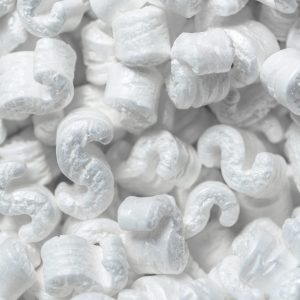The Dangers of Polystyrene
What is it?
Often we hear about and discuss the dangers of plastic both in our communities and on a global level within our society, but less talked about is the equally dangerous and widespread usage of polystyrene foam or “styrofoam.” Polystyrene foam is easily accessible to the public and comes in many different forms made for quick and convenient use such as lunch trays, to-go cups, food containers, and other forms of packaging. This type of foam is made by processing chemicals like benzene and ethylene into polymer chains that are combined with a hydrocarbon gas added in the binding process to form the type of foam packaging we are used to seeing on a daily basis.

Why is it dangerous?: The Human Body and The Environment
The Body
The chemicals listed above, benzene and ethylene, are both listed on the 14th Report on Carcinogens as scientifically understood to be a cancer-causing substance. Although the risk of developing cancer involves many factors, exposure to these carcinogens can prove to be dangerous especially when considering the exposure amounts. Many of these commonly used containers containing these harmful chemicals are responsible for carrying items that we directly ingest into our bodies. They prove especially harmful when these containers are heated, possibly releasing more amounts of harmful chemicals directly into our food for our consumption.
The Environment
Like exposure to carcinogenic chemicals from styrofoam isn’t worrisome enough, it also has detrimental effects on our environment. Because of its chemical composition, polystyrene is not biodegradable- meaning it will not naturally break down once it enters the environment. Because it is so lightweight, it is virtually worthless in terms of recycling which is why many recycling centers do not accept styrofoam. This combined with the fact that collecting these containers proves difficult as they are easily windblown means that most of the styrofoam produced ends up in our environment either in landfills, oceans or as litter along the roadside. Styrofoam can take up large amounts of space in landfills and can be found in “dead zones” in the ocean which are places where nothing other than plankton is able to survive. Even if all recycling centers did accept styrofoam, the method and consequences of this process of disposal is challenging. Because of it’s lightweight yet bulky properties, it requires a large expense of energy to transfer large quantities to recycling centers that have virtually no weight or value. Because it contains many chemicals, it often cannot be directly recycled upon arrival and requires methods of sterilization to remove contaminants. Also, when disposed of improperly, toxic chemicals that are devastating to humans, wildlife, and the ozone layer can be released into the environment.
Alternatives
To avoid the consequences associated with using polystyrene foam, it is important to find alternative products to assume it’s place. Many companies are turning to eco-friendly resources that are either compostable or multi-use products instead. Advancements such as reusable plastic to-go containers and coffee cups are being implemented in schools and homes. Others are turning to the use of paper products that are fiber or plant based so they are eco-friendly, recyclable, and quick to naturally degrade. Some are even taking the leap to make their packaging edible to eliminate the need for it to be recycled or thrown away as waste. Innovative ways of repurposing already existing polystyrene are sprouting to try and solve these issues such as using it for insulation or building.

Kam JaCoby
Sources:
https://www.triplepundit.com/2015/04/polystyrene-containers-stamped-sustainable-alter
https://greenpassivesolar.com/2012/10/what-is-styrofoam/
http://www.yourgreen2go.com/why-go-green.html
http://epsa.org.au/about-eps/what-is-eps/how-is-eps-made/
https://www.cancer.gov/about-cancer/causes-prevention/risk/substances/carcinogens
https://wmich.edu/mfe/mrc/greenmanufacturing/pdf/Polystyrene%20Recycling.pdf